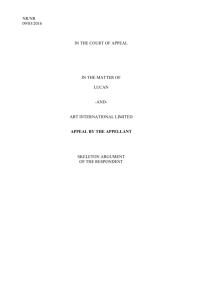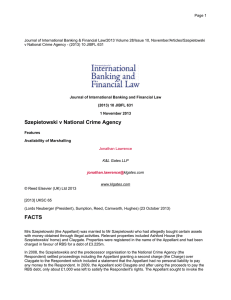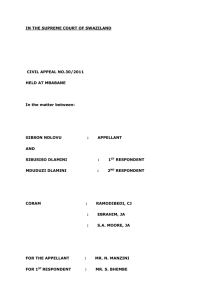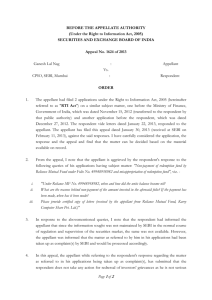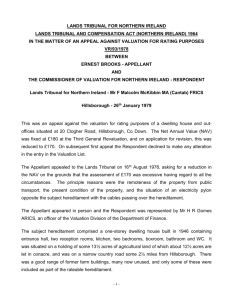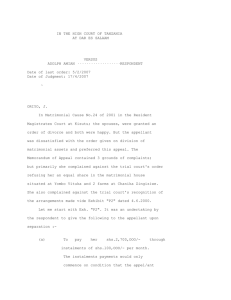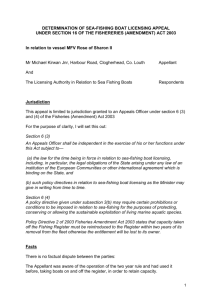Amir Weinberg v
advertisement
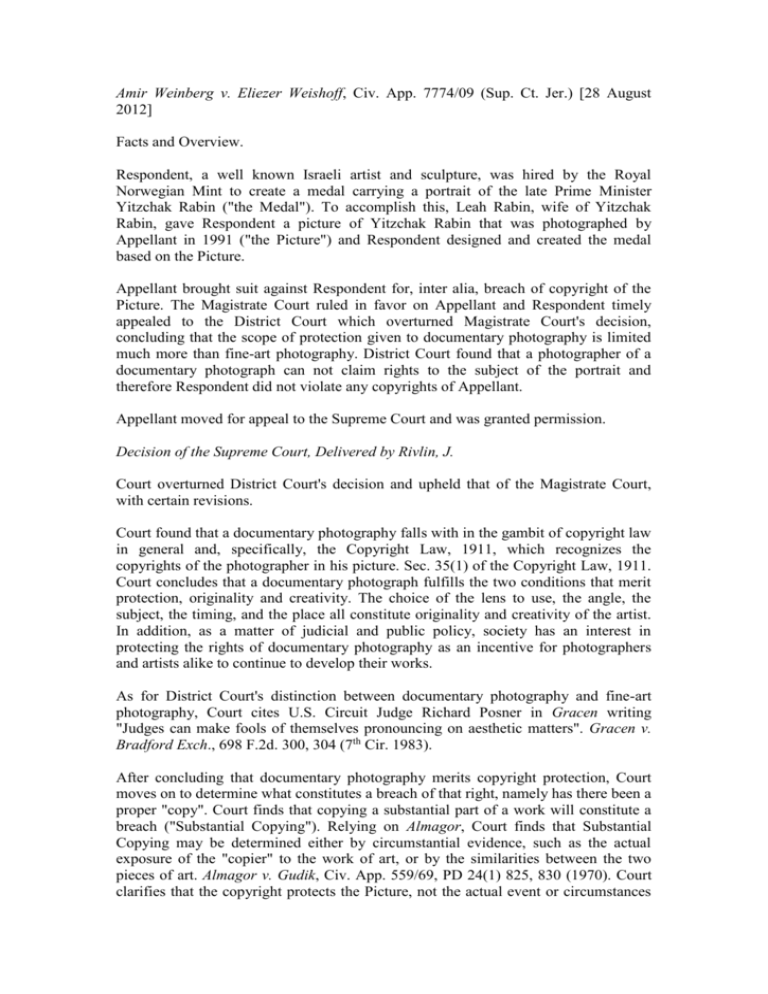
Amir Weinberg v. Eliezer Weishoff, Civ. App. 7774/09 (Sup. Ct. Jer.) [28 August 2012] Facts and Overview. Respondent, a well known Israeli artist and sculpture, was hired by the Royal Norwegian Mint to create a medal carrying a portrait of the late Prime Minister Yitzchak Rabin ("the Medal"). To accomplish this, Leah Rabin, wife of Yitzchak Rabin, gave Respondent a picture of Yitzchak Rabin that was photographed by Appellant in 1991 ("the Picture") and Respondent designed and created the medal based on the Picture. Appellant brought suit against Respondent for, inter alia, breach of copyright of the Picture. The Magistrate Court ruled in favor on Appellant and Respondent timely appealed to the District Court which overturned Magistrate Court's decision, concluding that the scope of protection given to documentary photography is limited much more than fine-art photography. District Court found that a photographer of a documentary photograph can not claim rights to the subject of the portrait and therefore Respondent did not violate any copyrights of Appellant. Appellant moved for appeal to the Supreme Court and was granted permission. Decision of the Supreme Court, Delivered by Rivlin, J. Court overturned District Court's decision and upheld that of the Magistrate Court, with certain revisions. Court found that a documentary photography falls with in the gambit of copyright law in general and, specifically, the Copyright Law, 1911, which recognizes the copyrights of the photographer in his picture. Sec. 35(1) of the Copyright Law, 1911. Court concludes that a documentary photograph fulfills the two conditions that merit protection, originality and creativity. The choice of the lens to use, the angle, the subject, the timing, and the place all constitute originality and creativity of the artist. In addition, as a matter of judicial and public policy, society has an interest in protecting the rights of documentary photography as an incentive for photographers and artists alike to continue to develop their works. As for District Court's distinction between documentary photography and fine-art photography, Court cites U.S. Circuit Judge Richard Posner in Gracen writing "Judges can make fools of themselves pronouncing on aesthetic matters". Gracen v. Bradford Exch., 698 F.2d. 300, 304 (7th Cir. 1983). After concluding that documentary photography merits copyright protection, Court moves on to determine what constitutes a breach of that right, namely has there been a proper "copy". Court finds that copying a substantial part of a work will constitute a breach ("Substantial Copying"). Relying on Almagor, Court finds that Substantial Copying may be determined either by circumstantial evidence, such as the actual exposure of the "copier" to the work of art, or by the similarities between the two pieces of art. Almagor v. Gudik, Civ. App. 559/69, PD 24(1) 825, 830 (1970). Court clarifies that the copyright protects the Picture, not the actual event or circumstances of the taking of the Picture. The photographer has no monopoly on the original source of a picture. Quoting U.S. Supreme Court Justice Holmes in Bleistein, Court sums up this point by saying "Others are free to copy the original, they are not free to copy the copy". Bleistein v. Donaldson Lithographing Company, 118 U.S. 239, 250 (1903). Court determines that the Medal is substantially identical to the Picture and hence violates the copyrights of Appellant, while giving weight to the fact that Respondent was exposed to the Picture. Regarding the violation of the moral rights of the Appellant, Court found that Respondent violated the Appellant's right to attribution while reversing Magistrate Court's opinion that Respondent violated Appellant's right to the integrity of the Picture. Sec. 4a of the Copyright Ordinance, 1924, stipulates that: (1) an author has the right that his work is attributed to his name […] (2) an author has the right that his work undergoes no distortion, mutilation or any other modification or other derogatory action in relation to the said work which would prejudicial to the author's honor or reputation ("Sub-Section 2 Moral Right"). Court rules, setting down interpretive precedent, that "prejudicial to the author's honor or reputation" applies to the whole sub-section 2, including "any other modification". In other words, in order to violate a Sub-Section 2 Moral Right, the modification must be "prejudicial to the author's honor or reputation". Therefore, as in the present case, Respondent violated Appellant's right to attribution but, as there was no prejudice "to the author's honor or reputation". Court mentions that this interpretation is not an issue in the new Israeli law, the Copyright Law, 5768-1997 as sec. 46 of that legislation clearly requires a "modification" to entail damage to the author's honor or reputation.

